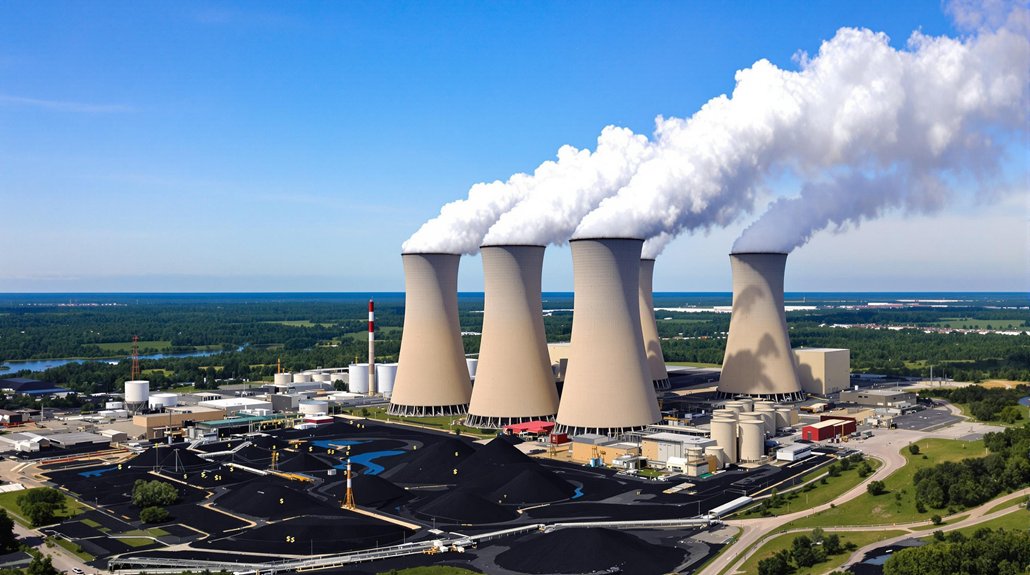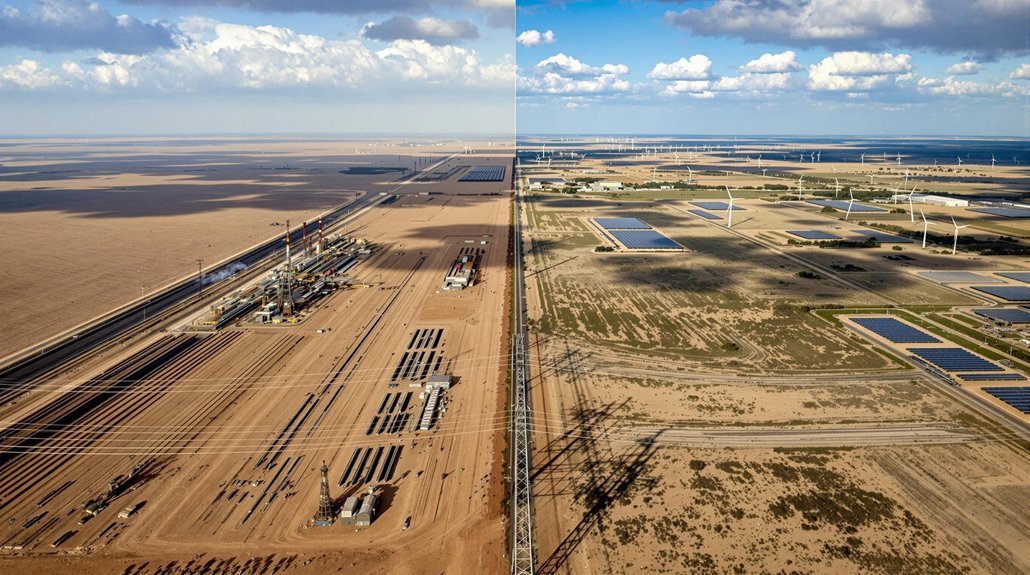India has doubled down on coal. In a dramatic policy turnaround, New Delhi has extended mandatory coal-fired generation directives until June 30, 2025. This isn’t just bureaucratic reshuffling—it’s a seismic shift. Power producers are finally breaking free from the rigid Power Purchase Agreements that kept them in a regulatory stranglehold for years.
Let’s face it: coal remains king in India. Supplying 55% of national energy needs and powering 74% of electricity generation, coal isn’t going anywhere fast. India ranks as the world’s second-largest coal consumer with the fifth-largest reserves. Not exactly the green transformation some had hoped for, but there’s method to this fossil-fueled madness. Unlike hydroelectric power, which offers 90% energy efficiency and zero emissions during operation, coal continues to dominate India’s energy landscape.
Coal powers India’s economy, fueling 74% of electricity with no signs of fading despite environmental concerns.
The numbers tell the story. Domestic coal output skyrocketed from 734 MT in 2018-19 to a whopping 1,149 MT in 2023-24. Meanwhile, imports dropped by 5.35% between April and November 2024, saving nearly $4 billion. Private sector production? Tripled in five years. That’s not just growth—it’s economic bodybuilding.
Critics are fuming, literally and figuratively. Coal plants remain major pollution contributors, spewing particulates across already choking urban centers. The environmental math doesn’t add up—more coal equals more smog equals more respiratory issues. Period.
But immediate divestment isn’t simple. Millions of jobs hang in the balance. Baseload power needs fulfilling. Industrial growth demands electricity. Cheap, reliable electricity. Coal delivers.
The government isn’t completely ignoring the climate crisis. They’re pushing technological upgrades and emission controls, exploring initiatives like “Mission Coking Coal” targeting 140 MT domestic production by 2029-30. They’ve launched safety reports and mine closure portals. Window dressing? Maybe. Pragmatic adjustment steps? Possibly.
India’s energy reality is complicated. This policy turnaround acknowledges an uncomfortable truth—rapid coal phase-out threatens economic stability and development goals. The recent directive affects power plants with a combined 17.5GW of capacity, ensuring sufficient generation during peak summer demand periods. Despite Prime Minister Modi’s ambitious target of 500 GW renewable energy by 2030, the immediate reliance on coal represents a pragmatic approach to balancing development needs with climate goals.
References
- https://www.argusmedia.com/news-and-insights/latest-market-news/2684351-india-extends-directive-to-lift-coal-fired-generation
- https://www.hbs.edu/environment/blog/post/IFC-India-2025-Tata
- https://www.energypolicy.columbia.edu/insights-from-the-2025-columbia-india-energy-dialogue/
- https://coal.nic.in/sites/default/files/2025-02/PIB2100763.pdf
- https://static.pib.gov.in/WriteReadData/specificdocs/documents/2025/feb/doc2025210497701.pdf








